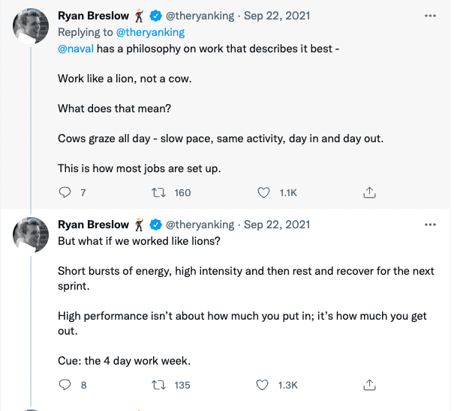Whether we like it or not, the way we work changed forever in March 2020. And after three years, things are continuing to change. What workers want is in constant battle with what organizations are willing to provide, and the bottom line?
The traditional workday is just not working anymore.
With resignation rates at an all-time high and talented professionals looking for the best cultural fit, considering a change in the way we work could be the key to growth for many organizations.
Why are people leaving?
The Great Resignation has been top of mind for just about every industry. Associations are either losing staffers, struggling to find new talent or are actively looking for ways to improve retention. And the big question continues to be, what do they want?
While many organizations are working to create “trophy offices,” the fact of the matter is that amenities can only go far. What professionals truly want is appropriate compensation, meaningful work and flexibility in every aspect of their work.
Coming soon: the four-day workweek?
One change that’s gaining momentum is the shortened workweek. In a recent study between HR Brew and Harris Poll, 83% of professionals were in favor of a four-day workweek – and even more interestingly, 87% of them were willing to work longer hours to attain that new schedule.
This is not a new theory either.
The Icelandic national government was one of the first to do large-scale testing. From 2015 to 2019, they ran trials with over 2,500 workers in a range of industries including social services and hospitals. They found that workers were more productive, had less risk of burnout and found improved work-life balance.
The way we think about work is changing
Workplace culture is critical not only to staffer satisfaction but also as you work to bring on new talent. For many associations, that means allowing staffers to work remotely or at the very least hybrid. However, as different generations enter the workforce, they could be looking for even more significant changes.
What did you get done vs. how long did it take?
Changing the traditional work day is not just a cultural shift, it’s also a change in the way we view work as a whole. In 2021, Bolt, a fintech startup, implemented a four-day workweek with its over 300-person staff.
In a recent Twitter thread, Ryan Breslow, CEO of Bolt, outlined some of the things he learned in that experiment.

This same model can work for associations as well. Instead of spreading out projects over the full week, what if organizations could get that same complex project done in a few days of intense work?
Apply that to processes like credentialing and educational content production. By allowing staffers to be hyper-focused on specific projects without interruption, associations can do a better job of serving their membership.
The future of work
While work traditionally meant being in the office five days a week for eight hours a day, the pandemic changed the way we do things. Your staff needs more flexibility throughout the day to contend with those blurred lines between work and home life.
So the question becomes, if they get the same outcome, does the process matter at all?
Tags:
Association Management
January 18, 2022


